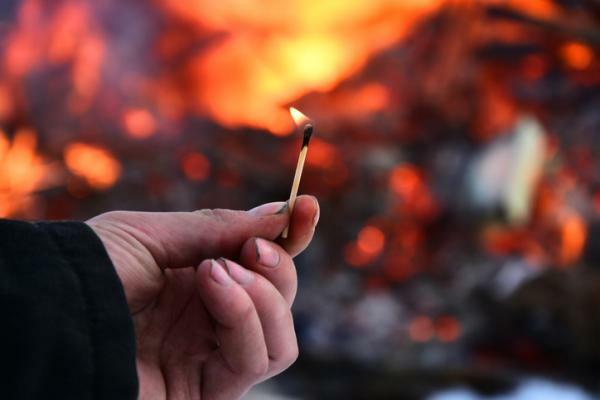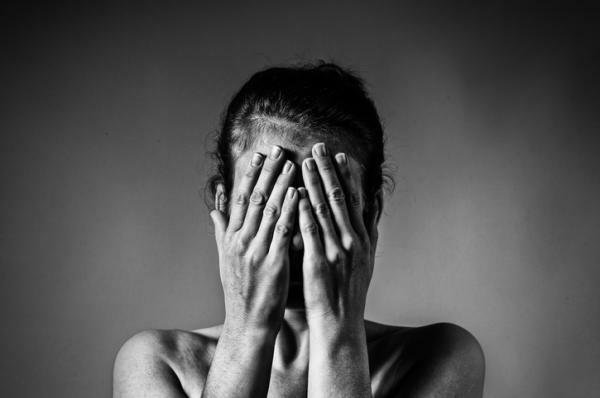
Fires can be devastating, in both rural and urban settings. Fire destroys everything in its path and can have material, personal and social consequences.
On many occasions behind a fire there is the hand of man, either intentionally or negligently. When it comes to an intentional act, we can find several causes that lead a person to start a fire. We usually refer to these people as "arsonists" but do you really know what pyromania is? In this Psychology-Online article, we talk about pyromania: what is it, symptoms, characteristics and treatment.
Index
- What is pyromania
- Symptoms of pyromania
- Characteristics of pyromania
- Treatment of pyromania
What is pyromania.
Both the American Psychiatric Association's dictionary of psychology and the ICD-11 classification, the meaning of pyromania is described as a repeated failure to resist impulses to start fires.
Pyromania is a psychological disorder included in the main diagnostic classifications: DSM-5 of the American Psychiatric Association
Are all people who start fires arsonists? Not necessarily. When considering pyromania as a disorder, it must meet a series of criteria in order to be diagnosed. Next, we will tell you what peculiarities and symptoms it requires.
Symptoms of pyromania.
To expose the symptoms of pyromania we follow the criteria set out in the DSM-5 classification. Let's see what they are:
- Repeated, deliberate and intentional setting of fires: This criterion rules out negligently causing fires. The person must start more than one fire and must do so deliberately.
- Voltage or excitation prior to setting fires: the person feels excited before starting the fire and that makes him want to do it more.
- Interest in fire: the arsonist has a special interest in fire and the whole context that surrounds it. They are curious and / or attracted to the consequences of causing the fire, mobilizing the means that move to extinguish the fire, etc.
- Pleasure in starting the fire: far from feeling unpleasant emotions, the arsonist feels pleasure, gratification or relief when he starts fires. The same happens when the person witnesses or participates in its consequences.
- Apparent lack of motivation to start the fires- A person may intentionally set fires for various reasons, for example economic, socio-political or religious ideas, personal revenge, vandalism, etc. In the case of pyromania, the person has neither of these intentions. Behind their behavior there are no secondary interests other than the pleasure and excitement they experience around causing the fire.
- Absence of other mental disorders: the setting of fires is not better explained by the presence of another disorder such as conduct disorder, manic episode, antisocial personality disorder, schizophrenia or other psychotic disorders, etc.
Characteristics of pyromania.
Pyromania is not a very common disorder. In fact, there are studies in which it has been tried to investigate and in which the participants could rarely be diagnosed with pyromania. It is difficult to find the profile of arsonist as described in the diagnostic classifications, since in the experimental context it has been frequent to find, precisely, comorbid disorders to the pyromania.
According to the Manual of Psychopathology and Psychological Disorders[3], the characteristics of pyromania are as follows:
- The disorder seems start in adolescence and tend to chronification.
- Seems to have a higher prevalence in men than in womens.
- More common in people who present intelligence below the norml.
Following Scott Johnson, R. and Netherton, E. (2016)[4], arson behaviors in children appear more commonly next to attention deficit disorder and hyperactivity. The same authors also expose some factors associated with the development of the disorder, such as abuse or family stress.
Treatment of pyromania.
The treatment of pyromania consists of both the administration of drugs and psychological therapy, in which we highlight cognitive behavioral therapy.
- Drugs: selective serotonin reuptake inhibitors, lithium, antiepileptic medication, atypical antipsychotics and antiandrogens.
- Cognitive behavioral therapy: appears to be promising in the intervention of this disorder. It is aimed at working in several directions, specifically, in identifying the arousal phase prior to the provocation of the fire, search and modification of irrational ideas, equip and / or improve the self-control strategies of the patient, etc.
This article is merely informative, in Psychology-Online we do not have the power to make a diagnosis or recommend a treatment. We invite you to go to a psychologist to treat your particular case.
If you want to read more articles similar to Pyromania: what it is, symptoms, characteristics and treatment, we recommend that you enter our category of Clinical psychology.
References
- American Psychiatric Association (2014). DSM-5. Reference guide to the diagnostic criteria of the DSM-5-Breviary. Madrid: Editorial Médica Panamericana.
- World Health Organization (WHO) (2018) International Classification of Diseases, 11th revision. Recovered from https://icd.who.int/es
- Fernández-Montalvo, J. and López-Goñi, J.J. (2014) Pathological Gambling and Disruptive Impulse Control and Behavior Disorders. In Caballo, V.E., Salazar, I.C. And Carrobles, J.A. (2014) Manual of Psychopathology and Psychological Disorders. Madrid. Pyramid.
- Scott Johnson, R. and Netherton, E. (2016) Fire Setting and the Impulse-Control Disorder of Pyromania. The American Journal of Pyschiatry Residents´ Journal, 11 (7), 14-16. https://doi.org/10.1176/appi.ajp-rj.2016.110707
Bibliography
- American Psychiatric Association (2020). APA Dictionary of Psychology. Recovered from https://dictionary.apa.org
Pyromania: what it is, symptoms, characteristics and treatment


